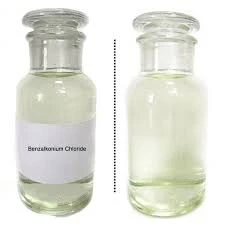Exploring the Uses and Benefits of CL and Methylisothiazolinone in Industry
Understanding CL+ME Isothiazolinone Uses, Safety, and Environmental Impact
In the realm of modern chemistry, preservatives play a crucial role in extending the shelf life of products that we use daily, from personal care items to household cleaners. Among these preservatives, CL+ME isothiazolinone, commonly referred to as Kathon CG, has garnered significant attention due to its efficacy and versatility. This article delves into what CL+ME isothiazolinone is, its applications, safety profile, and the environmental considerations surrounding its use.
What is CL+ME Isothiazolinone?
CL+ME isothiazolinone is a synthetic preservative that belongs to the isothiazolinone family. It primarily comprises two components chloromethylisothiazolinone (CMI) and methylisothiazolinone (MIT). Together, these compounds create a robust formulation effective against a wide range of microorganisms including bacteria, fungi, and yeasts. This makes them particularly useful in various products, as they help prevent spoilage and maintain product integrity.
Applications in Various Industries
The versatility of CL+ME isothiazolinone allows its use across multiple industries
2. Household Cleaning Products Many household cleaners, detergents, and disinfectants rely on CL+ME isothiazolinone for its powerful antimicrobial properties.
3. Industrial Applications The compound is also employed in paints, adhesives, and industrial coatings, providing protection against microbial degradation.
cl+ me isothiazolinone

4. Paper and Textiles In these industries, it serves as a biocide to prevent the growth of bacteria and fungi that could compromise product quality.
Safety Profile and Regulatory Status
As with any chemical additive, the safety of CL+ME isothiazolinone has been a topic of extensive study. Regulatory bodies like the European Commission and the U.S. Environmental Protection Agency (EPA) assess the potential risks associated with its use.
Research has indicated that while CL+ME isothiazolinone is effective in small concentrations, it can cause allergic reactions in some individuals, particularly those with sensitive skin. Symptoms may include irritation, redness, and in severe cases, dermatitis. Consequently, many products now include warnings about its presence and recommend patch testing before use.
The International Agency for Research on Cancer (IARC) has not classified CL+ME isothiazolinone as a carcinogen, but its potential environmental impact—especially regarding aquatic life—is being closely monitored. Hence, adherence to recommended dosages and formulations is essential for both consumer safety and environmental preservation.
Environmental Considerations
One of the critical concerns surrounding CL+ME isothiazolinone is its environmental impact, particularly on aquatic ecosystems. Studies have shown that the compound is toxic to aquatic organisms. As such, its use in products that may enter water systems is under scrutiny. Increased awareness about sustainability and eco-friendliness has prompted several manufacturers to explore alternative preservatives or to reformulate products in such a way that minimizes environmental exposure.
Conclusion
In conclusion, CL+ME isothiazolinone serves as an effective preservative across various industries, offering considerable benefits in prolonging the shelf life of products. However, its potential for causing allergic reactions and the environmental implications of its use necessitate vigilance in application and regulation. Ongoing research and the development of safer, more sustainable alternatives are essential as society continues to evaluate the balance between efficacy, safety, and environmental responsibility in the chemical industry. Understanding these dimensions will ensure that both consumer health and environmental integrity are prioritized as we move forward.
-
lk-319-special-scale-and-corrosion-inhibitor-for-steel-plants-advanced-solutions-for-industrial-water-systemsNewsAug.22,2025
-
flocculant-water-treatment-essential-chemical-solutions-for-purification-processesNewsAug.22,2025
-
isothiazolinones-versatile-microbial-control-agents-for-industrial-and-consumer-applicationsNewsAug.22,2025
-
scale-inhibitor-key-solutions-for-water-system-scale-preventionNewsAug.22,2025
-
organophosphonates-versatile-scale-inhibitors-for-industrial-water-systemsNewsAug.22,2025
-
scale-and-corrosion-inhibitor-essential-chemical-solutions-for-water-system-maintenanceNewsAug.22,2025





